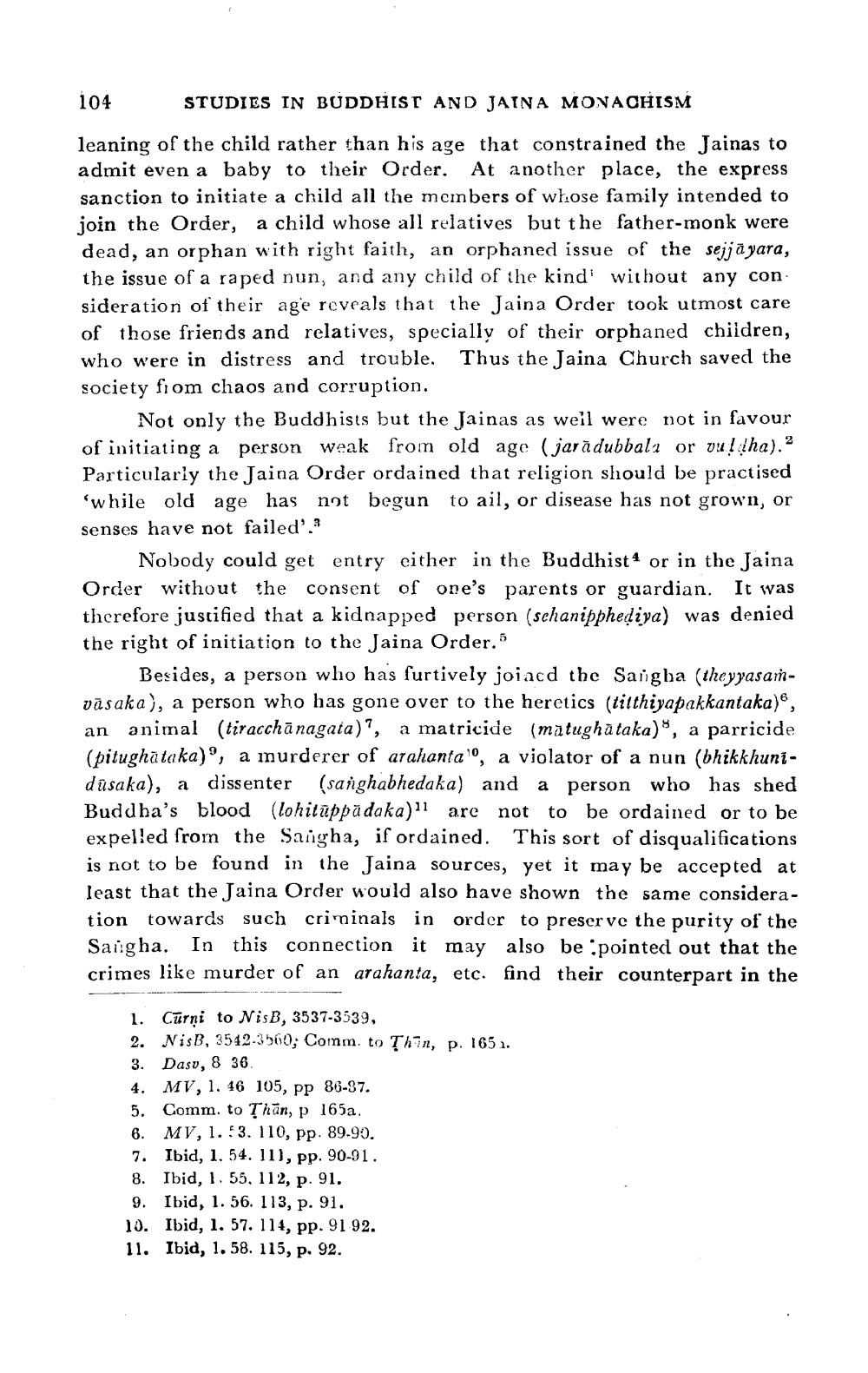________________
104
STUDIES IN BUDDHIST AND JAINA MONACHISM
leaning of the child rather than his age that constrained the Jainas to admit even a baby to their Order. At another place, the express sanction to initiate a child all the members of whose family intended to join the Order, a child whose all relatives but the father-monk were dead, an orphan with right faith, an orphaned issue of the sejja yara, the issue of a raped nun, and any child of the kind without any con sideration of their age reveals that the Jaina Order took utmost care of those friends and relatives, specially of their orphaned children, who were in distress and trouble. Thus the Jaina Church saved the society from chaos and corruption.
Not only the Buddhists but the Jainas as well were not in favour of initiating a person weak from old age (jară dubbala or vuldha). 2 Particularly the Jaina Order ordained that religion should be practised 'while old age has not begun to ail, or disease has not grown, or senses have not failed'.
Nobody could get entry either in the Buddhist 4 or in the Jaina Order without the consent of one's parents or guardian. It was therefore justified that a kidnapped person (schanipphediya) was denied the right of initiation to the Jaina Order.
Besides, a person who has furtively joiacd the Saigha (theyyasanvāsaka), a person who has gone over to the heretics (tilthiyapakkantaka), an animal (tiracchānagaia)?, a matricide (matughā taka), a parricide (pitughataka)', a murderer of arahanta'', a violator of a nun (bhikkhunidusaka), a dissenter (saighabhedaka) and a person who has shed Buddha's blood (lohituppadaka)" are not to be ordained or to be expelled from the Sangha, if ordained. This sort of disqualifications is not to be found in the Jaina sources, yet it may be accepted at least that the Jaina Order would also have shown the same consideration towards such criminals in order to preserve the purity of the Saigha. In this connection it may also be pointed out that the crimes like murder of an arahanta, etc. find their counterpart in the
Cūrni to NisB, 3537-3539, 2. NisB, 3542-3560; Comm. to Th7n, p. 165 1. 3. Dasu, 8 36.
MV, 1. 46 105, pp 86-37. 5. Comm. to Thān, p 165a. 6. MV, 1.53. 110, pp. 89-90. 7. Ibid, 1. 54. 11), pp. 90-91. 8. Ibid, 1. 55, 112, p. 91. 9. Ibid, 1. 56. 113, p. 91. 10. Ibid, 1. 57. 114, pp. 91 92. 11. Ibid, 1.58. 115, p. 92.




